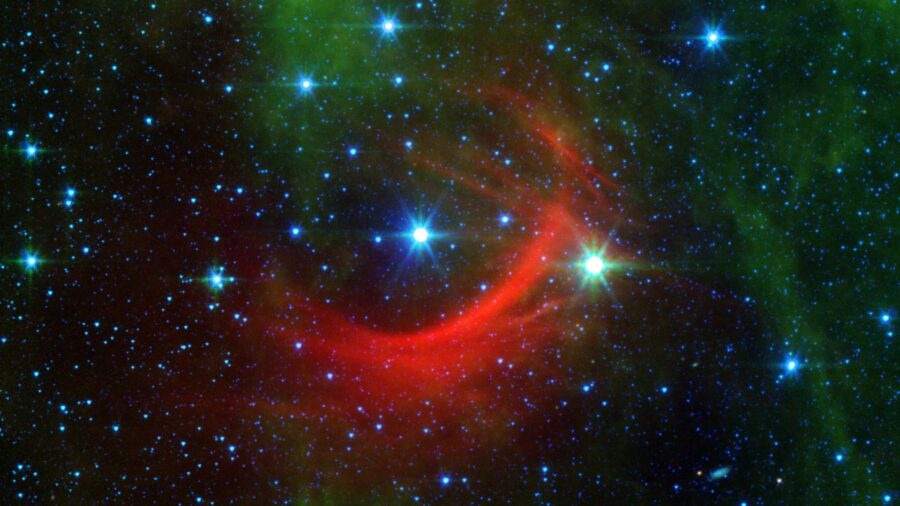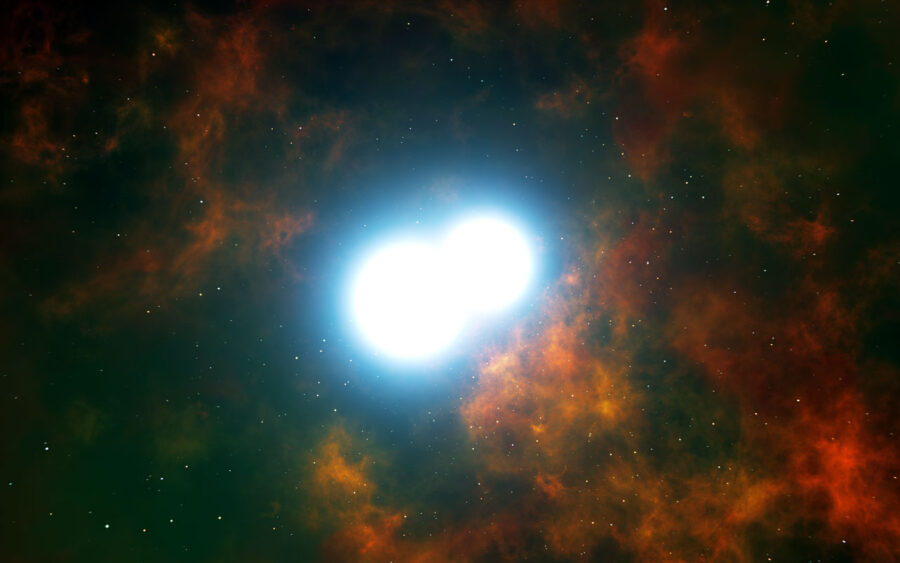Scientists Witness New Way For Stars To Die
A new study claims stars can cause a massive gamma ray burst by colliding into one another.

We know that stars can explode into a supernova when they die, with the remnants becoming either neutron stars or black holes. We also know that they can expand into a planetary nebula before cooling down into a white dwarf, then eventually a theoretical black dwarf. Now, a paper published by Nature Astronomy reports that we’ve witnessed yet another way stars can die: stars can collide with each other, resulting in a massive gamma-ray burst.
This discovery comes from an international team of astrophysicists observing the area around a supermassive black hole located at the center of an ancient galaxy. After observing a minute-long flash of gamma rays at the Neil Gehrels Swift Observatory, the researchers spent time studying the afterglow that remained after the initial burst.
Through intense study, they were able to rule out the most common causes of gamma-ray bursts and come to the conclusion that two stars had collided in the faraway galaxy.
Previously, gamma-ray bursts have mostly been known to come from the collapse of a massive star, the collision of two black holes, the merging of two neutron stars, or the collision of a neutron star and a black hole. However, the lack of a supernova or other similar evidence near the origin point of the gamma-ray burst made it clear that something else had happened.
Ancient galaxies, which can be tens of billions of years old, are galaxies where few (if any) new stars can be formed. These galaxies have denser clusters of stars and stellar remnants.

Scientists have long theorized that a pair of colliding stars would result in a Gamma Ray Burst, but the phenomenon had never been observed before. Researchers knew that the most likely location for such a collision would be in crowded areas such as the center of an ancient galaxy. Scientists hypothesize that many such gamma-ray bursts have gone undetected due to the high amount of gas and dust located near these galactic centers.
While this is the first time that a collision-caused gamma-ray burst has been detected, scientists have long known about stars that collide — albeit over longer time frames. Binary star systems — that is, a set of two stars orbiting each other — have been known to collide after their orbits grow closer and closer. Depending on the types of stars, the merging of stars results in a stellar collision, which can cause a supernova, a similar phenomenon called a “kilonova,” or a rare “luminous red nova.”
The discovery of this previously-unobserved type of stellar collision serves as a reminder that there are still many unknown things out there in the vast expanse of the universe. We have received many such reminders recently — often thanks to the James Webb Space Telescope, which has spent the past year and a half challenging everything we thought we knew about the universe. However, discoveries such as these, which were made by earthbound observatories, prove that there is still plenty of use for the older technology that we’ve created over the years.












